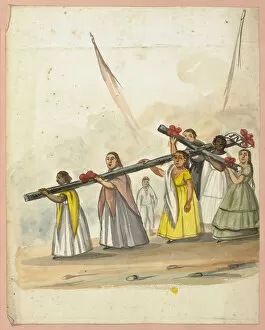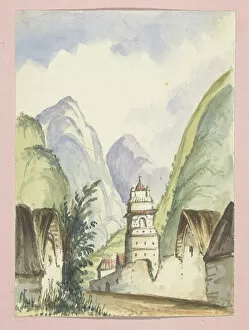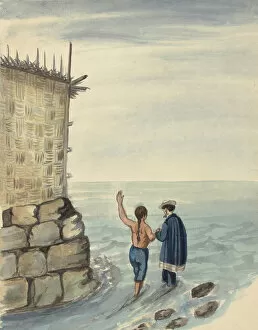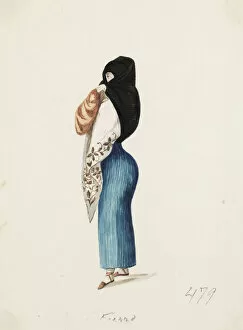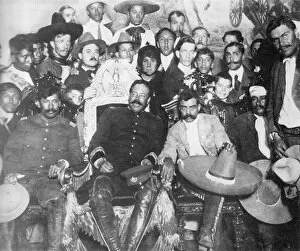Fierro Collection
"Fierro: A Journey Through Time and Culture" Giuseppe Fierro, also known as G. Fierro, was a man whose name became synonymous with the rich cultural heritage of Peru
For sale as Licensed Images
Choose your image, Select your licence and Download the media
"Fierro: A Journey Through Time and Culture" Giuseppe Fierro, also known as G. Fierro, was a man whose name became synonymous with the rich cultural heritage of Peru. In 1853, he captured the essence of Slaves Chorillos dancing in grotesque masks, accompanied by jawbone instruments. This unique procession showcased women dressed in elaborate costumes, crossing Lima's streets. Fierro's artistic vision extended beyond the city limits as well. He erected a cane rancho hut in Matucana village for the purpose of dancing to Lima costumes. The year 1853 witnessed Pancho leading El Arriero mules laden with cases of goods while being guided by a skilled mulateer. In another breathtaking scene from that same year, two figures were captured bathing in the ocean amidst their vibrant Lima costumes, and is through these images that we catch glimpses into life during this era. The Festival San Juan de Dios brought forth yet another captivating moment when women took part in a grand procession wearing Tapada blue saya dresses from Gutierrez collection maps. Fast forward to the Mexican Revolution between 1910-1913; Rodolfo Fierro stood far right beside Pancho Villa himself. Their presence symbolized strength and unity during those tumultuous times. Fierro's legacy lives on through his remarkable documentation of history - an exploration into different cultures and traditions spanning across time and continents. His work serves as a testament to our shared humanity and reminds us to cherish our diverse heritage.



